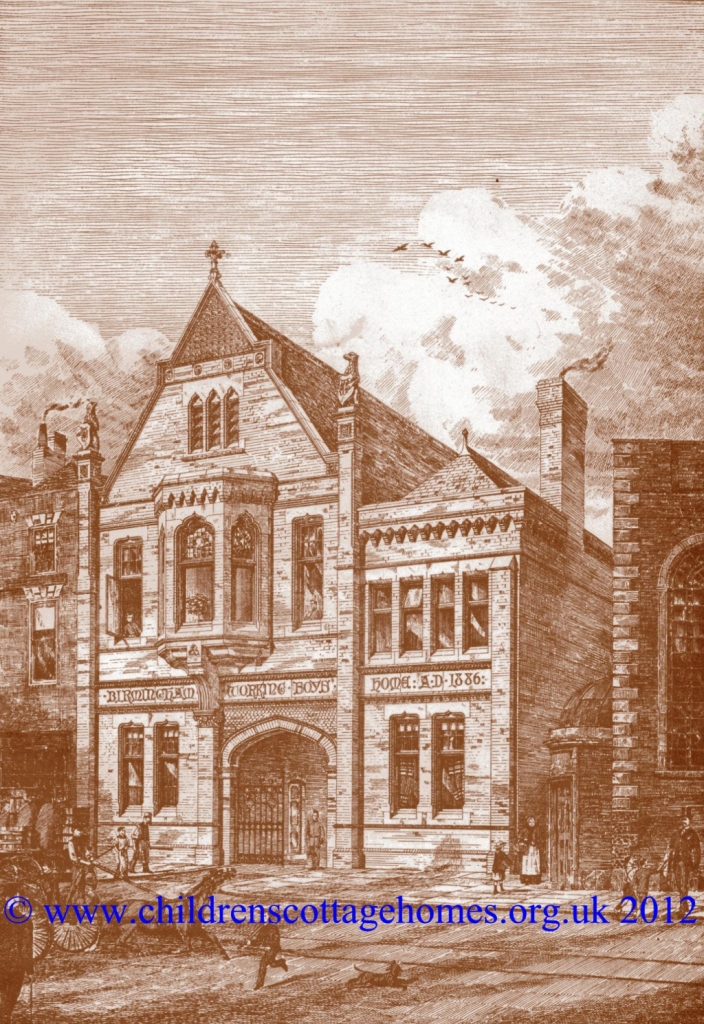Working Boys' Homes
Working Boys' Home gained popularity in Victorian times. Typically, boys living in cottage homes or other institutions run by the Guardians of the Poor would leave school when they were 14 years old.
They would then be moved out of the cottage homes and into a working boys' home. They would have been trained in a skill or trade while at the homes, such as shoe-mending or carpentry and, in the working boys' home they would be encouraged, or supported in getting a job. They would pay the home a proportion of their wages for their board and would perhaps have some money left over for themselves.
When the Working Boys' Home was built in Deritend 1886, it was stated that it was "the aim in designing this building to produce something that would differ from the ordinary barrack or workhouse type, which is too often adopted for similar institutions". It is true to say that working boys' homes were generally smaller than the institutions for younger children but the routines and regimes generally remained strict and restrictive.
Generally boys would stay in the homes until they were settled in work or an apprenticeship or until they reached the age of 18.
Not all boys would go into a working boys' home. Some would find apprenticeships which came with accommodation, others might go straight into digs or perhaps join the armed services.
Working children's homes continued to be used right up until the 1970s.
It is not always easy to establish who ran working children's homes. Some were run by charities (such as the Children's Society), others were run by the Guardians of the Poor themselves. Others were run by independent philanthropists or church bodies.
Examples of working boys' homes:
Allenscroft Road Working Boys' Home 1960s and 1970s Allenscroft Road, Birmingham
Birmingham Working Boys' Home early 1900s Ryland Street, Birmingham
Birmingham Working Boys' Home opened 1886 Deritend, Birmingham (pictured top right)
Copeley Hill Hostel 1935 - 1968 Copeley Hill, Erdington, Birmingham (run by the City Council, for 30 boys at any one time)
1880s onwards? Bath Street, Hereford
Howard House Working Boys' Home 1881 - 1926 Church Street (now Fournier Street), Whitechapel/Spitalfields, London (run by philanthropic individuals including Lord Kinnaird)
Kincora Boys' Home functioning in the 1980s Belfast
Leicester Working Boys' Home 1892 - 1905 Avenue Road, Leicester (run by the Children's Society)
St Andrews Working Boys' Home early 1900s Great Peter Street, Westminster
St Vincent's Working Boys' Home early 1900s - 1920s? Stephenson Terrace, Deepdale Road, Preston (linked to St Vincents Boy's Home, and run by the Catholic Diocese. it housed 25 to 30 boys)
St Vincent's home for working boys opened in the 1900s Moseley Road, Birmingham (run by Father Hudson's Society, a Catholic charity)
Vauxhall House 1913 - 1952 Vauxhall Road, Aston, Birmingham
|
|






